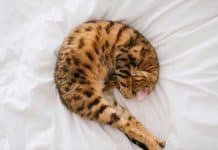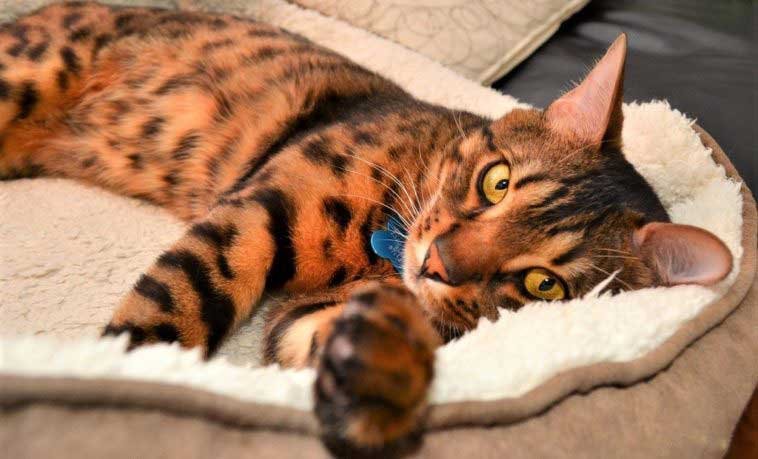Bengal cats, like all cats, can be affected by genetic diseases. Hypertrophic cardiomyopathy (HCM) is a heart disease present in many breeds of cats of all ages: from a few months to over 15 years old. All breeds are concerned, including the “Bengal cat”.
There is no test to date for Bengal. Genetic testing is currently available for Maine Coon and Rag Doll cats.
The only way to screening is to practice an ultrasound examination of the heart as early as one year of age to detect certain revealing abnormalities.
The ultrasound must be repeated regularly to monitor any sign of the appearance of the disease.
Hypertrophic cardiomyopathy (HCM) results in an increase in the thickness of the heart muscle, called the myocardium, in the left ventricle.
The problem is that it grows inward. Causing poor cardiac function, a decrease in the space available for the reception of the blood, and therefore the ability of the heart to pump oxygenated blood into the body.

All causes of Hypertrophic cardiomyopathy (HCM) are not identified. Most causes are the result of general disease.
Hypertrophic cardiomyopathy (HCM) symptoms:
The symptoms of Hypertrophic cardiomyopathy (HCM) are varied, possible symptoms include:
- Heart murmur.
- Congestive heart failure.
- Decreased activity and appetite.
- Labored breathing.
- Loss of function of one or more legs due to blood clots that usually form in the left atrium very abnormally dilated.
- Occasionally, acute sudden death may occur without any symptoms being detected.
Diagnosis:
The diagnosis of this disease should be made by a veterinarian practicing auscultation associated with more specific examinations such as echocardiography, electrocardiography, and radiography.
In case of clinical suspicion of a heart condition, echocardiography is an examination giving a precise diagnosis of the nature of the disease.
The limits of echocardiography reside in the difficulty of the acquisition and image interpretation and in the lack of cat cooperation.

Treatment:
The ideal treatment is that of the disease responsible for myocardial hypertrophy if known.
For the other forms, the literature is rich in varied recommendations, but there are few studies really documented.
The result of the various complementary examinations and the experience of the veterinarian make it possible to set up a suitable therapeutic plan.
In the acute phase, feline cardiomyopathy is an emergency that involves hospitalization if one wishes to limit as much as possible a loss of luck for the cat.
The signs of heart failure will be treated intensively and adapted to each case: resuscitation, oxygen therapy, pleural puncture, …







